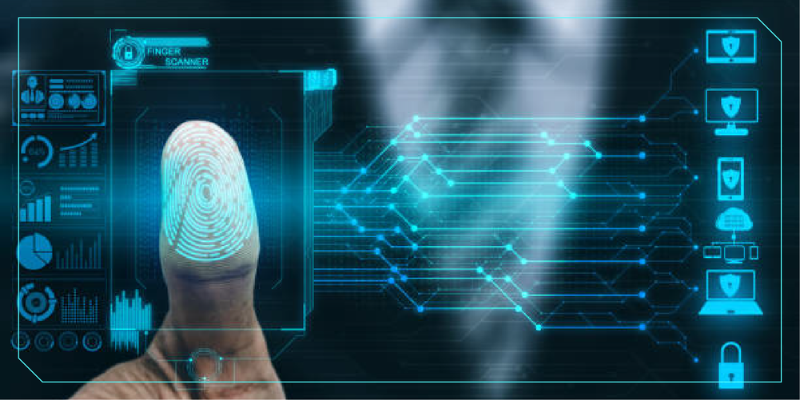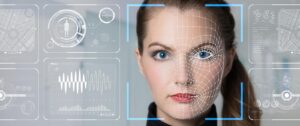
Close


“Banks have to upgrade themselves, or risk being burnt to the ground.”

–JP Nicols
Biometrics isn’t a new concept and banks that don’t implement this technology risk missing out on the latest revenue opportunities. It’s not about just security, customers absolutely want biometrics to be part of finance offerings according to research by iProov.
There are different applications for biometrics in the finance sector such as customer onboarding, authentication, ID verification, and border and access control. Face verification technology is used in conjunction with biometrics for liveness detection and companies are investing up to USD 14.3 million dollars for these projects.
Over 30% of banks do not let customers open accounts without completing biometrics and this type of verification streamlines vario us security processes. A majority of global banks online do not allow PIN number change or request for new debit cards unless the customer passes their physical verification identity checks. Due to the increasing number of fraudulent transactions in the finance industry, manufacturers are stepping up their game and implementing multi-sample biometric verification in online gateways. Biometric solutions incorporate a range of fully-automated face, iris, voice, fingerprint, etc., to verify customers and ascertain their physical identities in real-time.
Vein and gait authentication is an emerging trend where the users’ sense of movement, hand vein DNA, and style of speaking are recorded. The finger vein is a unique physical trait which doesn’t change with age and vein verification technology was introduced in 1992. Authentications results are much higher and cannot be faked when compared face or finger sensing technologies, thus making vein verification biometrics very popular. Contact-based and contactless biometrics is encouraging researchers to develop more applications in this field and revolutionize the finance industry.
Online banking apps protect the identity of clients by using biometrics when they make purchases across the world. The rapid digitization of finance industry is encouraging new players to adopt the latest biometric identification trends. Companies are using stricter employee identification protocols and biometrics is becoming a integral part of banking security.
Long story short, customers want biometrics solutions too.
From applications such as signing into accounts, opening or closing savings accounts, applying for new loans and more, biometric authentication offers a host of benefits and makes it easier to onboard customers for everyday transactions.
Here are some of the top ways biometric authentication is revolutionizing the financial industry:
Quickly Authenticates Customers
Concerns about online ID theft and fear of social engineering practices are prompting players to implement biometrics into everyday life.
According to a recent survey by Experian, over 61% of adults in the UK believe that biometrics is just as secure as current banking systems for online banking and in-person logins. It’s more secure than current methods of password management and research revealed that customers have greater confidence linking their social media accounts with banking applications. Biometrics Single Sign-On (SSO) Solution removes the burden of password management and lets customers access their banking information on any network without compromising security.
Users can encrypt specific files using biometric identity scans and can open them from any device via a single log-in. These solutions feature supporting regulatory compliance from frameworks such as Sarbanes-Oxley and HIPAA as well, thus making them trustworthy and reliable.
Easy Virtual Onboarding
The COVID-19 pandemic has changed the world In many and contactless authentication is now an essential part of biometrics. Social distancing is practiced to prevent the spread of the virus which is why many leading banks use biometric authentication for virtual onboarding. With this technology, users can sign in from anywhere, anytime, and from any device. Virtual onboarding facilitates Omni-channel applications which are integrated into core finance systems.
Detect and Prevent Fraud
Banks are using biometrics to comply with the latest ISO standards and maintain an audit trail of their customers. The technology is used to track and monitor customer activities with the aim of looking out for suspicious behaviors on networks. Biometric technology solutions keep a log of customer activities within systems so anytime a problem crops up, users get immediately alerted or flagged.
A major benefit of biometrics is its application in preventing fraud. Biometrics solutions are used to prevent insider fraud and allow banks to deploy strong employee identification checks. There is no scope for leaking sensitive data to third-parties and users are held accountable for managing personal information. An extra layer of security gets added when facial biometrics is combined with fingerprint and other types of scanning. If a fraudster happens to bypass fingerprint scanners somehow, they cannot get past the other identity checks.
Conclusion
Although biometrics is being heavily implemented in the finance industry, other sectors such as governments, retail, businesses, startups, and non-banking financial institutions are catching up. The technology took the world by storm when Apple first launched its Touch ID biometrics with Samsung coming second with fingerprint scanning. More customers are realizing that the future of banking is biometrics and when you choose this technology, there is no need to install new hardware or implement manual identity checks.
From greater employee satisfaction, faster transactions, streamlined identification, and fraud prevention, biometrics is becoming critical and will continue to revolutionize companies across the globe.
References:

FinBraine offers lending and digital KYC solutions on B2B and B2C Models